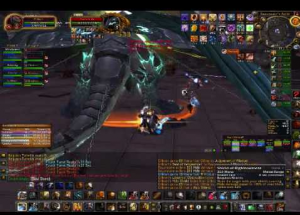As we continue our look at replayability in game design, we turn to one of the most popular features requested by gamers: Multiplayer. Depending on who you talk to, this can be the make it or break it point for a game. And yet despite its popularity, there isn’t too much discussion about why it makes a game more replayable.
AI Players:
For games where the player and AI are dealing with the same mechanics, an AI is always limited compared to the human player. We are still not at the point where AIs can mimic human reaction and improvisation when it comes to gameplay. To compensate, designers will give the AI advantages like getting additional resources in a strategy game. Another thing designers will do is limit the AI for co-op-based titles so that they don’t just play the game themselves.
Regardless of the advantages given, AIs are built to react to the player’s actions. Master level play comes down to figuring out how to get the AI to behave how you want and crush it; like we see in speed running. Given enough time, a player will figure out exactly how to exploit the AI and then the illusion of play is shattered.
Again, it’s important to point out that we’re excluding games where the AI and player are essentially playing two different games for this post; such as in singleplayer driven titles.
While an AI does have a limit on what it can do against a player, another human does not.
The Human Factor:
Multiplayer, large and small, is about the excitement and uncertainty of playing against other people. Unlike AI opponents, humans don’t have a set and exploitable way of thinking. For good and bad, you never know what a human player will do.
One of the best examples of this is obviously in E-Sports. The entire industry has been built on the technical skill and mastery needed to play these games at the grand master level. A big draw for the Battle Royale genre has been the very fact of having 100 players go at it on a single map and watching the spectacle unfold.
With all that said, there is a deeper discussion about what human players add to a game, and it gets at the heart of the matter.
User Generated Content:
No matter what kind of design we’re talking about, multiplayer in any form creates something special: User Generated Content. User Generated Content for our post will be defined as a player either directly or indirectly creating content for other players.
This is also where the social aspect of multiplayer games factor in. There have been numerous stories of friendships, romance, rivalries, and more, forming from multiplayer games. Being able to interact with someone who you know is a real person is different from talking to an NPC who only has fixed dialogue options.
When it comes to content being generated, there are two main forms. The first is in the form of content that adds to the game; typically in the form of mods or custom content. The second kind is the very act of having people in the game space.
Some examples would be becoming the top player on a server, achieving a celebrity status among people playing a game, or just being the player everyone else targets. Both forms of content can never truly come from just an AI playing your game.
Most importantly, user created content is required for any game to have a multiplayer community. If there aren’t enough people able to support your game, it doesn’t matter how great your game is if no one is playing.
As long as you have a community willing to stay for the long term, you will have an endless amount of user created content for your game.
Free Development:
For our last point, I want to turn to an unintentional benefit of multiplayer. For titles built around a games as a service model, there is a lot of content and constant development needed to keep people engaged.
We could argue at this point that it’s impossible for a design team to create all that content at the rate players consume it. What multiplayer does is provide a foundation for the playerbase to essentially “create” more content and ways to play.
Going back to Battle Royale design, development teams don’t need to create dozens of maps, because that’s not the main focal point of play; it’s the people who you’re playing against. This is often why many MMOs and MMO-like designs typically use PVP as the endgame. Once players are fully powered up, what better way to show how superior you are than to fight against other players?
From the last section, as long as you have a community who is still playing and supporting your game, players can be sure that every match, map, etc, will be a different experience. This frees up the design team to come up with new elements that can be integrated into the user generated content. In turn, it allows you to get more out of less content compared to something that is just story driven.
Almost Done:
Multiplayer was not originally planned to be discussed in this series, but its addition to replayability cannot be discounted. With that said, there is so much more to talk about in terms of how difficult it is to create a popular multiplayer feature, but that is beyond our scope today.
For our penultimate part, we’re going to talk about the two ways that games generate content for the player.



